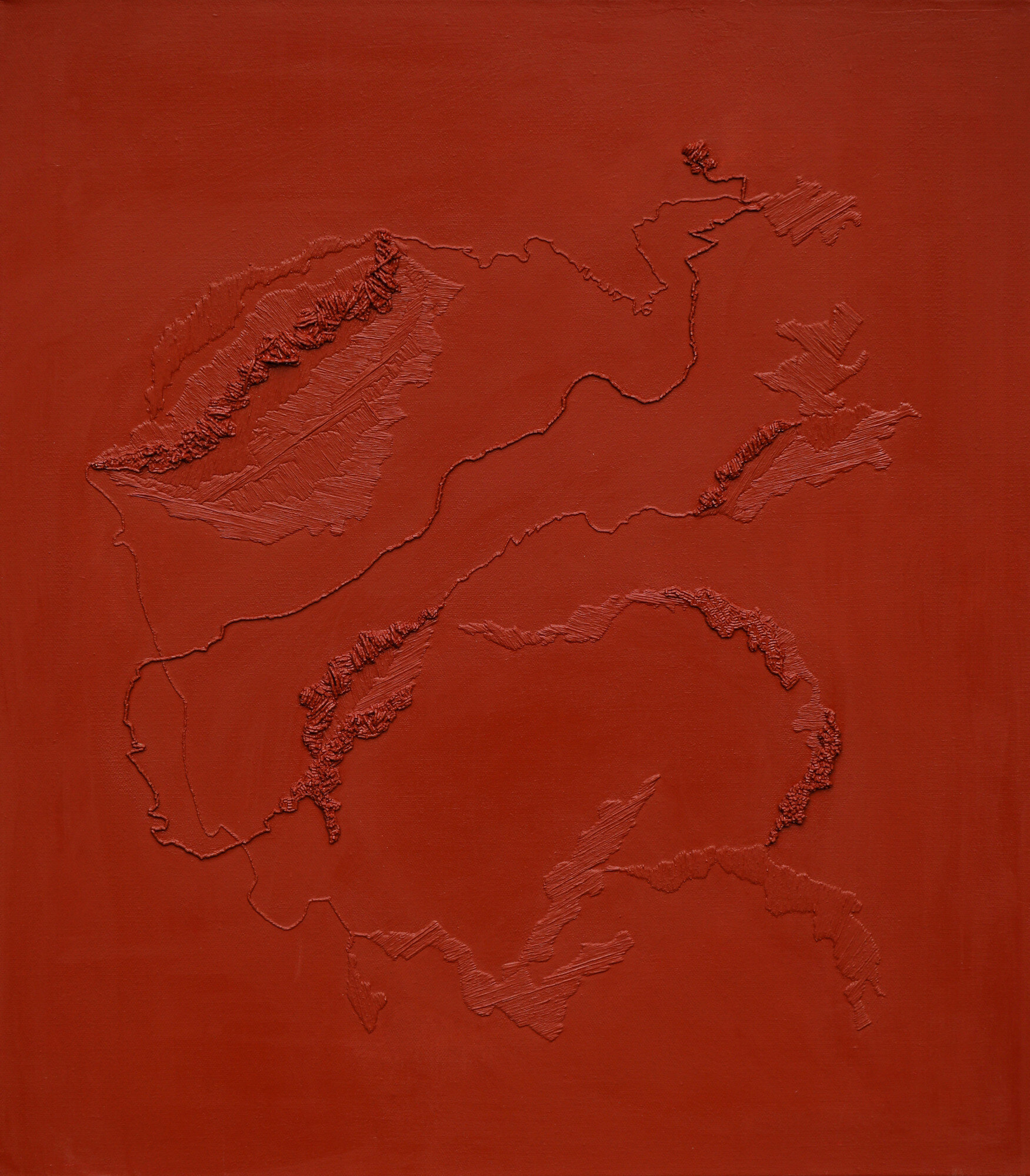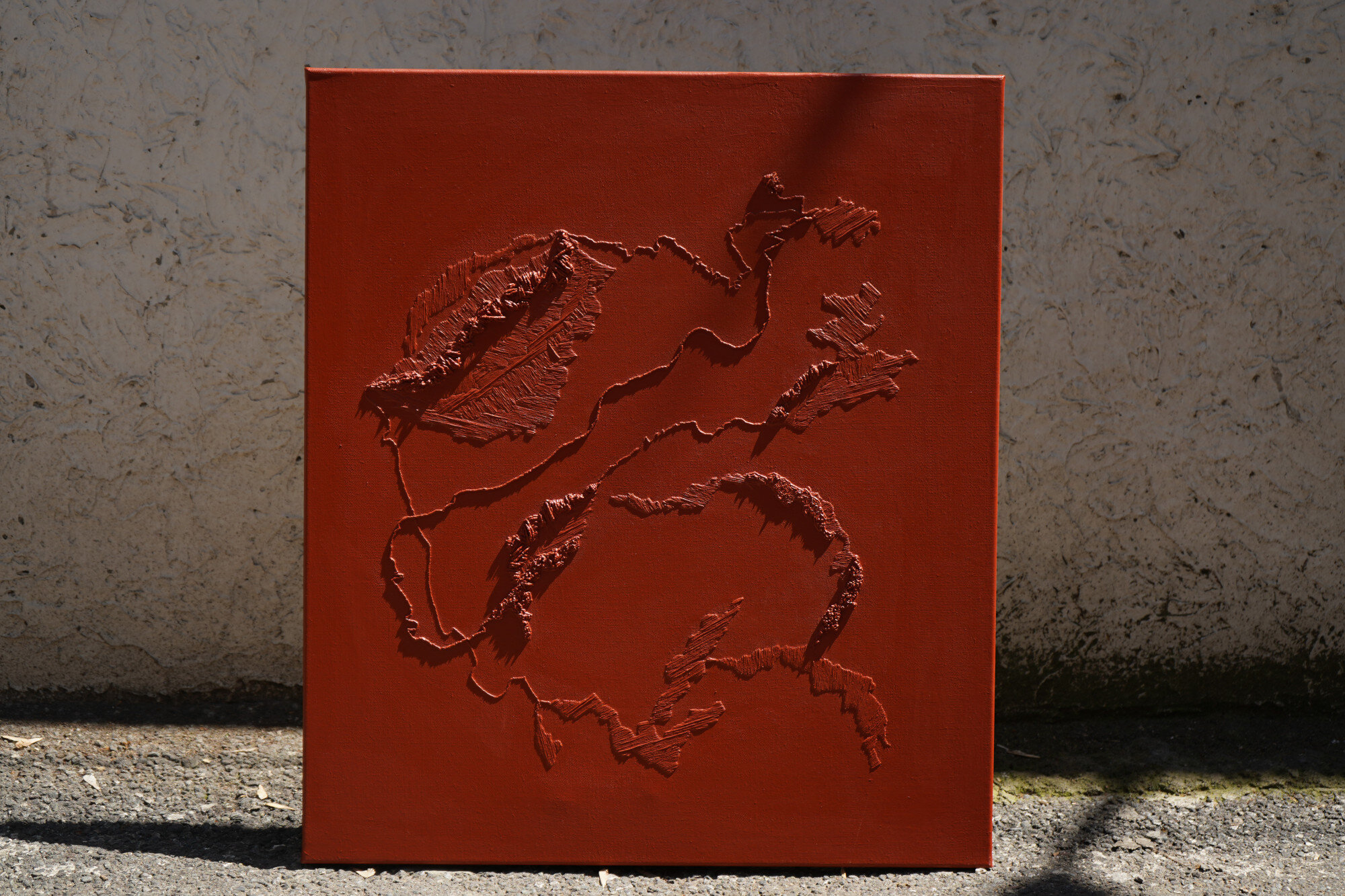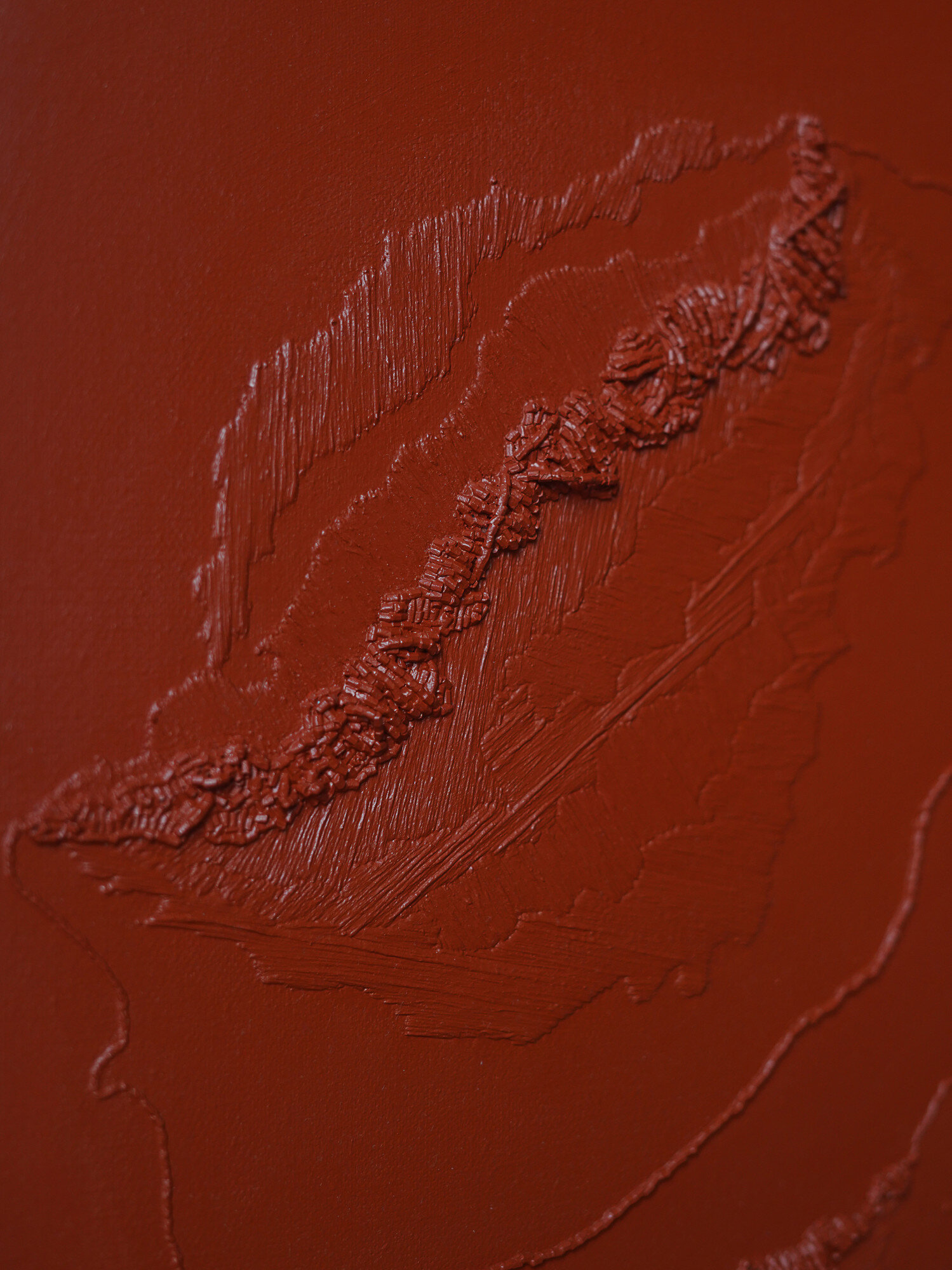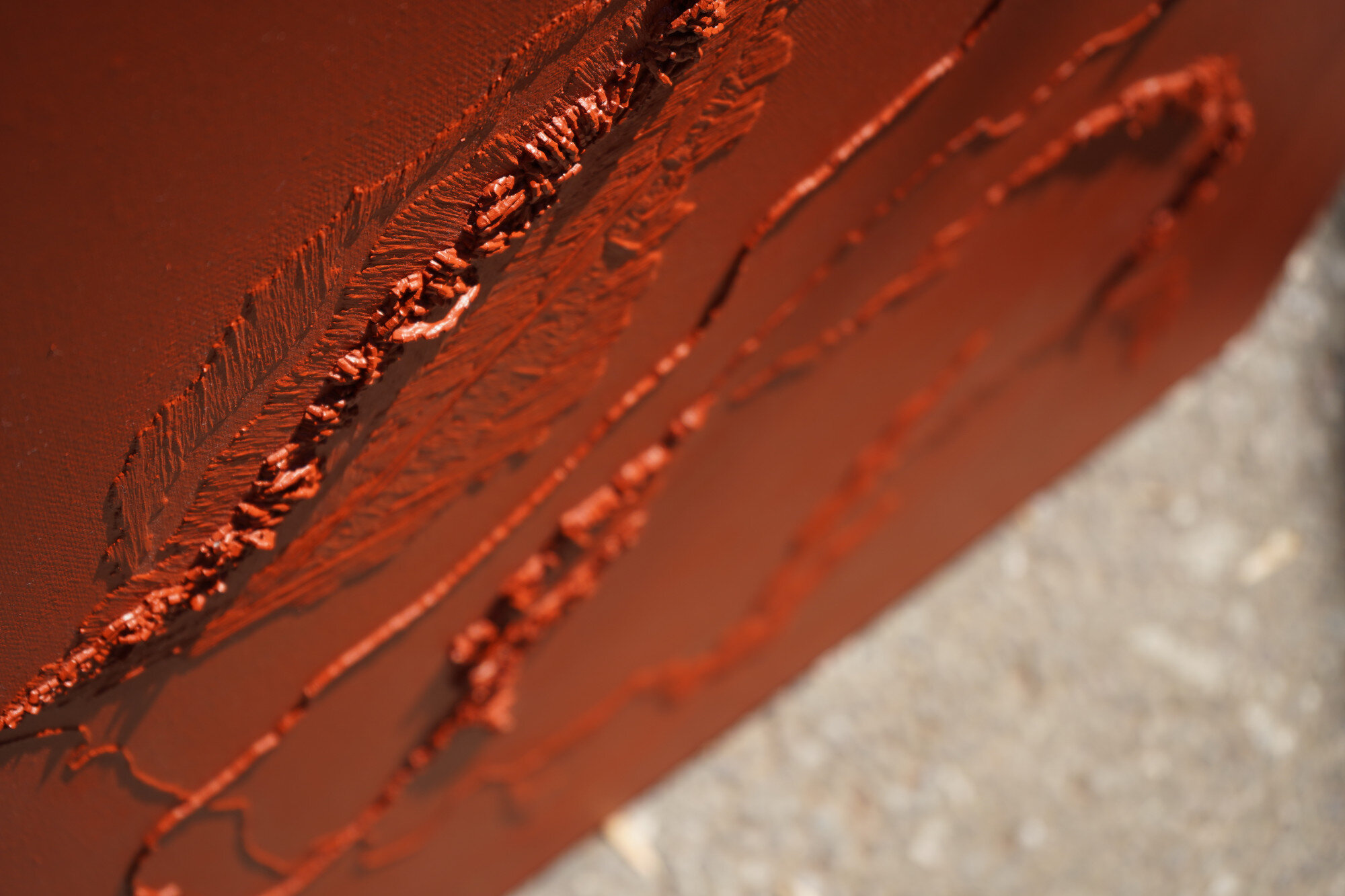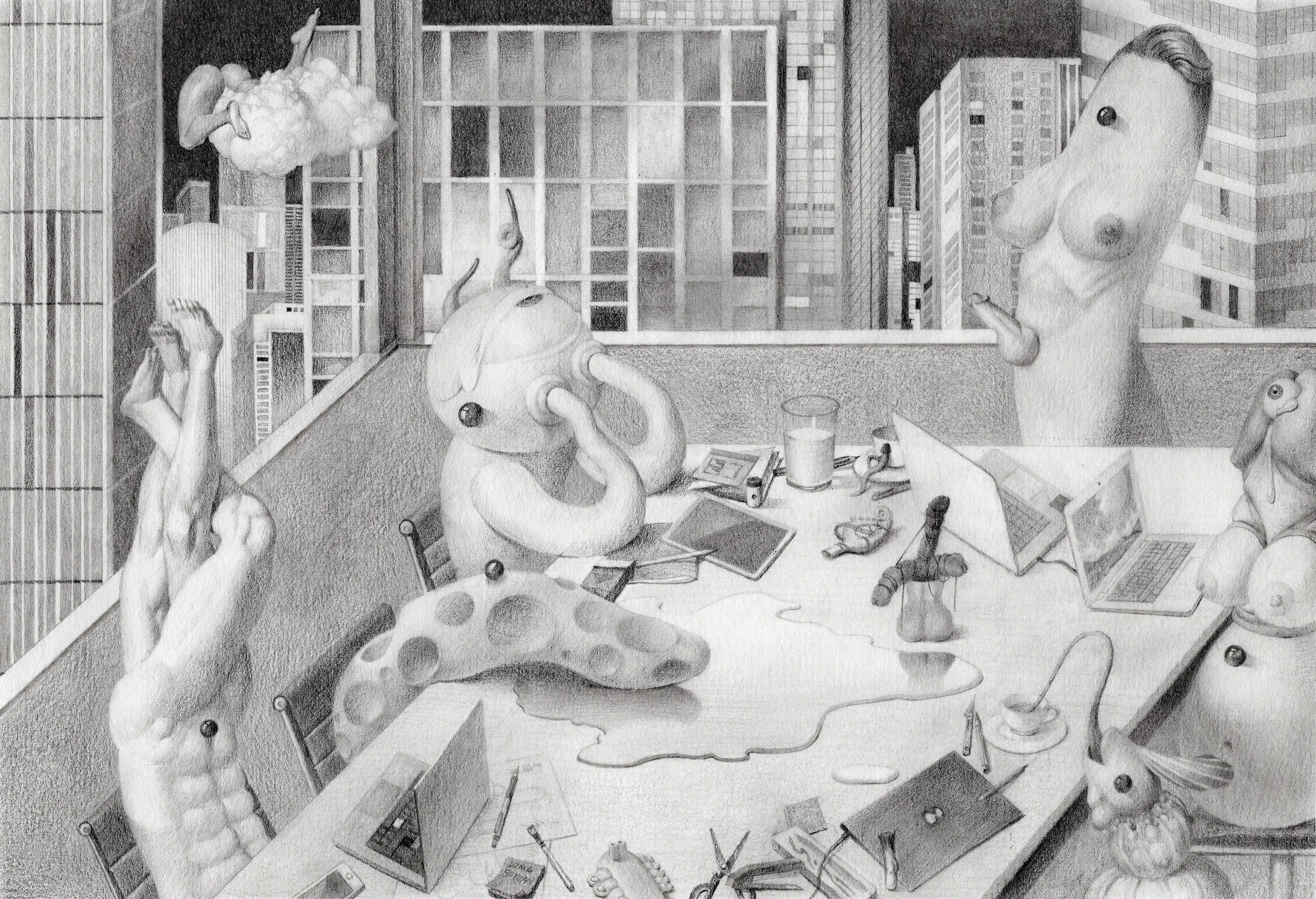10 Questions with Mary Badalian
Mary Badalian is a contemporary visual artist currently living and working in Yerevan, Armenia. A lawyer by training, Mary’s interests span international relations, human rights and questions of ethics and integrity which she developed through internships at the Armenian Constitutional Court, Chamber of Advocates and at the UN in Armenia. In parallel to her university studies in law (Slavonic University of Armenia, 2018), Mary rediscovered her passion for art and creativity as a form of self-expression. For Mary these two paths - although distinct - are interconnected: while the law creates an environment for freedom of thought, art is the expression of that liberty in its most human form.
Since 2017, Mary has immersed herself in a practice of mixed media on canvas that involves intricate embroidery of thread and beads covered by acrylic paint, often in a monochrome palette. Her practice is both an ode to her Grandmother, an avid embroiderer, as well as a “quiet rebellion” as she transforms a traditionally female, domestic craft into large scale works of fine art.
Mary Badalian portrait
ARTIST STATEMENT
“Mary’s artistic practice is marked by interweaving: of thread, materials, but also driving forces of nostalgia and compulsion. After her grandmother passed away in 2017, she left her a collection of threads from Soviet times. Their colors and textures reminded her of my middle school years when she used to embroider, a hobby was completely forgotten until recently.
Compulsion is what led her to merge those threads with an unfinished canvas was lying around. Her process is persistent and repetitive. Embroidering is an especially unrushed, intricate and exigent work. With every piece, she is compelled to immerse herself in that meditative, even therapeutic, process. At times, she approaches the canvas with a clear sense of the shapes and forms she wants to create. Other times the journey is more intuitive, taking shape as it goes, letting the thread guide her. Each piece shelters a story and intense emotions, abstracted and expressed through texture and colour. These works and their process are her self-expression and self-exploration.”
WIP, Embroidery floss on canvas, 50x50cm, 2020. Mary Badalian©
INTERVIEW
You are a lawyer by training, but also an artist. How did you start practising art?
It is a cliche, but art been my one true passion since early childhood. I still remember how my grandma, aka my biggest fan, would boast to everyone how I don’t colour outside the lines in colouring books. In my country, choosing the career of an artist is still a huge risk as most of my life only realist and classicist artists had a chance to make a living out of it. But after the recent revolution, the art scene here has started to rapidly develop.
I had been making abstract paintings since I was 16, and taking academic drawing classes parallel to it. But with the intensities of my studies at law school, I didn’t paint or draw anything at all for two years and honestly thought I would never touch a paintbrush again. But when I finally graduated in 2018, I felt a strong urge that I had to make something again. I hat an unfinished canvas lying around and a box of embroidery thread from my grandma who had passed that year, and it all came together.
What is your personal aim as an artist?
I feel the most, powerful, free and at the same time peaceful only when I make my art. Since I am at the very beginning of my path as an artist my aim is to keep exploring, experimenting, growing and just not staying in the same place. I want to keep testing my limits and refine my practice.
Disco-rd - WIP, Embroidery floss on canvas, 60x60cm, 2020. Mary Badalian©
Imposter Syndrome. Emroidery floss and acrylic on canvas, 50x70cm, 2018. Mary Badalian©
You use embroidery both as a form of self-expression and as a way to remember your grandmother. How important are memory and personal history for you and your work?
Memory and personal history are somewhat a catalyst in my work. It may not be visible to the viewer but every piece holds a story behind it, whether it’s the pain of losing a loved one or the anxieties of isolation. In many ways, it serves as a form of therapy for me.
In your works, threads are used as a means to build texture and patterns. How do you work on the canvas and how do you create your works?
It is a quite slow and intricate process, which takes a lot of precision and a steady hand. I always try to use new patterns and techniques, so it is also a learning process. Usually, the image of the artwork pops in my head and then I go order a canvas at a local supply store and get going. Depending on the pattern and the size of the canvas, one work can take from 1 to 4 months. Smaller details take more time and also glass beads since they are more delicate and take longer to create a cohesive shape out of.
Protagonist, Embroidery floss and acrylic on canvas, 60x80cm, 2018. Mary Badalian©
Tell us about the colors in your work. You work either on monochrome canvases or on very colorful patterns. Is there a specific meaning behind the colors and how do you choose them?
Every work I make, including the monochrome ones, start with a colorful pattern. Every piece is made out of at least 20 skeins of embroidery thread. Unfortunately, the local textile shops do not offer a huge choice of colors or patterns for embroidery threads, so I always end up choosing from the same palette. But even so always try to create a new color story for each piece, be it vibrant blues and reds or earthy tones. When it comes to the choice of color of the paint that the canvas will be covered in, I would say it’s the same as a parent choosing a name for its child. Pretty much the only way I can explain it.
What aspect of your work do you pay particular attention to?
In recent times I have been trying to integrate new types of embroidery in my work, learn new stitching techniques. I want my works to be similar but not repetitive.
Where do you find inspiration?
It is hard to give a distinct answer to this question. Technically - everywhere. My biggest source are my own emotions, but at the same time, every time I see something beautiful I want to recreate it in my own way. I make sure to expose myself to beauty every day: nature, architecture, furniture, fashion, photography, the list is endless.
What do you hope that the public takes away from your work?
I wish the viewer can experience the same feeling of peacefulness as I did in creating those works.
Let’s talk about the future, what are you working on now, and what are your plans for the future?
Right now I am trying to expand the scale of my current work both quantity-wise and size-wise, to see where this can take me. In the future, I am planning to try out new mediums like clay and wood. I am also trying to have a better digital presence, something I am struggling with just a little bit.
Now that we are in 2021, what do you expect from this year?
I think last year taught us that it is better not to have any expectations. But also I am looking forward to doing an artist residency for the first time.
Disambiguation, Embroidery floss and acrylic on canvas, 50x60cm, 2019. Mary Badalian©







